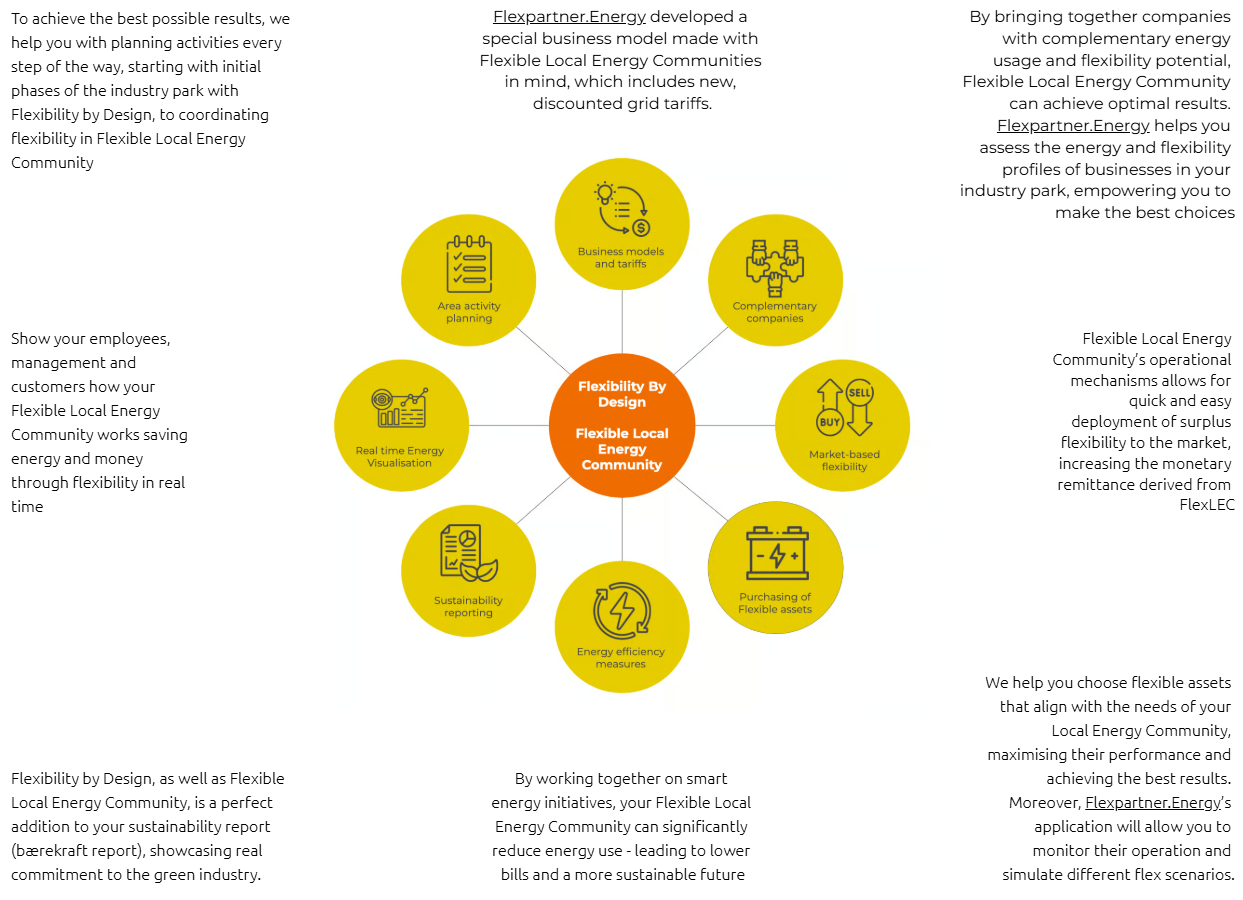
"FLEXIBILITY BY DESIGN"
Flexibility by Design is an innovative, comprehensive approach towards flexibility in industry parks. It entails elements such as including flexible assets in the planning process, attracting companies with complementary energy usage, or adopting an innovative business model containing lower energy costs and grid tariffs.
By adopting the Flexibility by Design mindset, flexibility becomes an integral part of your industry area, contributing to the development of the green industry. At Flexpartner.Energy, we help you realise this vision every step of the way.


Reduced power costs
Business economics
Reduced power costs for companies in FlexLEC
Lower electricity prices
Economies of scale
Lower grid costs
Increased activities for companies due to more power being available
Market-based flexibility
Revenue from energy community
Socio-economics
Phasing-out fossil fuels
Postponing new construction costs
Optimal utilisation of the grid


Sustainability
Grid flexibility plays, and will continue to do so, an important role in the process of energy transition. It directly contributes to at least four Sustainable Development Goals (SDGs):




Affordable and Clean Energy
It allows greater integration of renewable energy sources into the power grid through improving the efficiency of the existing infrastructure.
Goal 7
Goal 9
Industry, Innovation and Infrastructure
Grid flexibility contributes to cutting CO2 emissions from the industry sector, simultaneously promoting innovation and fostering resilient infrastructure.




Responsible Consumption and Infrastructure
The responsible electricity usage fostered by grid flexibility is an important step in the sustainable production of goods and services.
Goal12
Goal13
Climate Action
Through its contribution to the reduction of CO2 emissions, grid flexibility assists in reaching the Net Zero by 2050 scenario and plays a part in combating climate change and its consequences.
